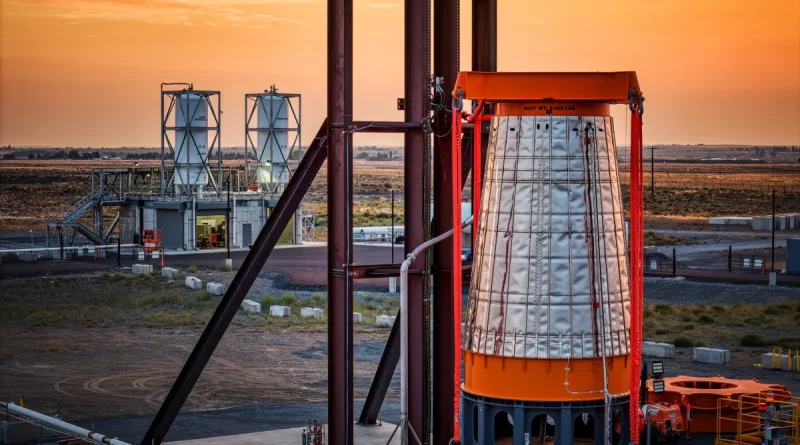Stoke Space Secures $510M Funding, Indicating a Defense-Focused Future for Launches
On Wednesday, Stoke Space announced a significant capital raise that might initially seem like a typical investment in the commercial launch sector. However, a deeper examination reveals a more intricate story.
This $510 million Series D round, spearheaded by billionaire Thomas Tull’s U.S. Innovative Technology—a fund dedicated specifically to technologies associated with national security—marks a key shift in the launch industry. It was once believed that the primary players in the launch arena would be those securing the bulk of commercial payloads.
While there is still demand from the commercial sector, driven by private constellation developers and emerging fields such as in-space manufacturing and lunar payloads, the emphasis has unmistakably moved towards defense.
Not too long ago, space startups attracted investors with promises of a rapidly expanding commercial market, spurred by weather monitoring, broadband, and remote-sensing satellites. For instance, Astra anticipated in its 2021 SPAC presentation that it would ultimately launch hundreds of rockets each year to meet the growing need for small satellites. Relativity Space promoted a 3D printing revolution that would make rockets more affordable and elevate significant commercial interest.
However, opportunities for commercial payloads are constrained, with only one player—SpaceX—offering consistently affordable and dependable launch services.
In stark contrast, the defense sector is experiencing remarkable growth.
Geopolitical events, such as Russia’s invasion of Ukraine and the rising competition from China in space, have opened up new paths for expansion. The Pentagon’s “Golden Dome” initiative—a multi-billion dollar effort to create a layered missile defense system over the continental United States—has introduced substantial new opportunities into the aerospace industry.
Techcrunch event
San Francisco
|
October 27-29, 2025
Initiatives such as the Space Force’s National Security Space Launch (NSSL) and the Space Development Agency’s missile-defense satellite constellation are promising long-term, high-value contracts.
Launch startups have taken notice, redirecting their focus, language, and business models toward a single client: the U.S. government.
In a press release, Stoke Space acknowledged this transition, stating that the new funding would enhance “capability across the U.S. space industrial base.” Backing from new investors like Washington Harbour Partners LP and General Innovation Capital Partners underscores “Stoke’s importance to national security and the U.S. industrial base,” the company noted.
Stoke’s recent successes reflect this new reality. In March, it was selected as one of a small number of launch providers for the NSSL Phase 3 Lane 1 program, which offers the opportunity to compete for up to $5.6 billion in launch contracts over the next decade.
Recent deals reinforce this pattern. For instance, Firefly’s $855 million acquisition of SciTec was characterized by CEO Jason Kim as a strategic move to enhance the company’s “capacity to support a growing number of defense missions.” Meanwhile, Relativity’s new owner, former Google CEO Eric Schmidt, recently warned lawmakers that should China attain superintelligence first, “it changes the balance of power globally in ways that we have no way of understanding, predicting or managing.”
While his remarks weren’t solely focused on launch, they encapsulate a broader sentiment within the space industry: America must sustain its edge in critical areas like space and AI.
In this context, USIT stands out as a fitting leader for the new funding round. Thomas Tull initiated the fund in 2023 to finance technologies with “relevance to the national interest.”
Prior investments are varied yet aligned with national resilience, featuring companies such as defense startup Shield AI and Gecko Robotics. Stoke’s inclusion in this portfolio reinforces the emerging understanding that investment in space is firmly located at the intersection of venture capital and defense funding.



